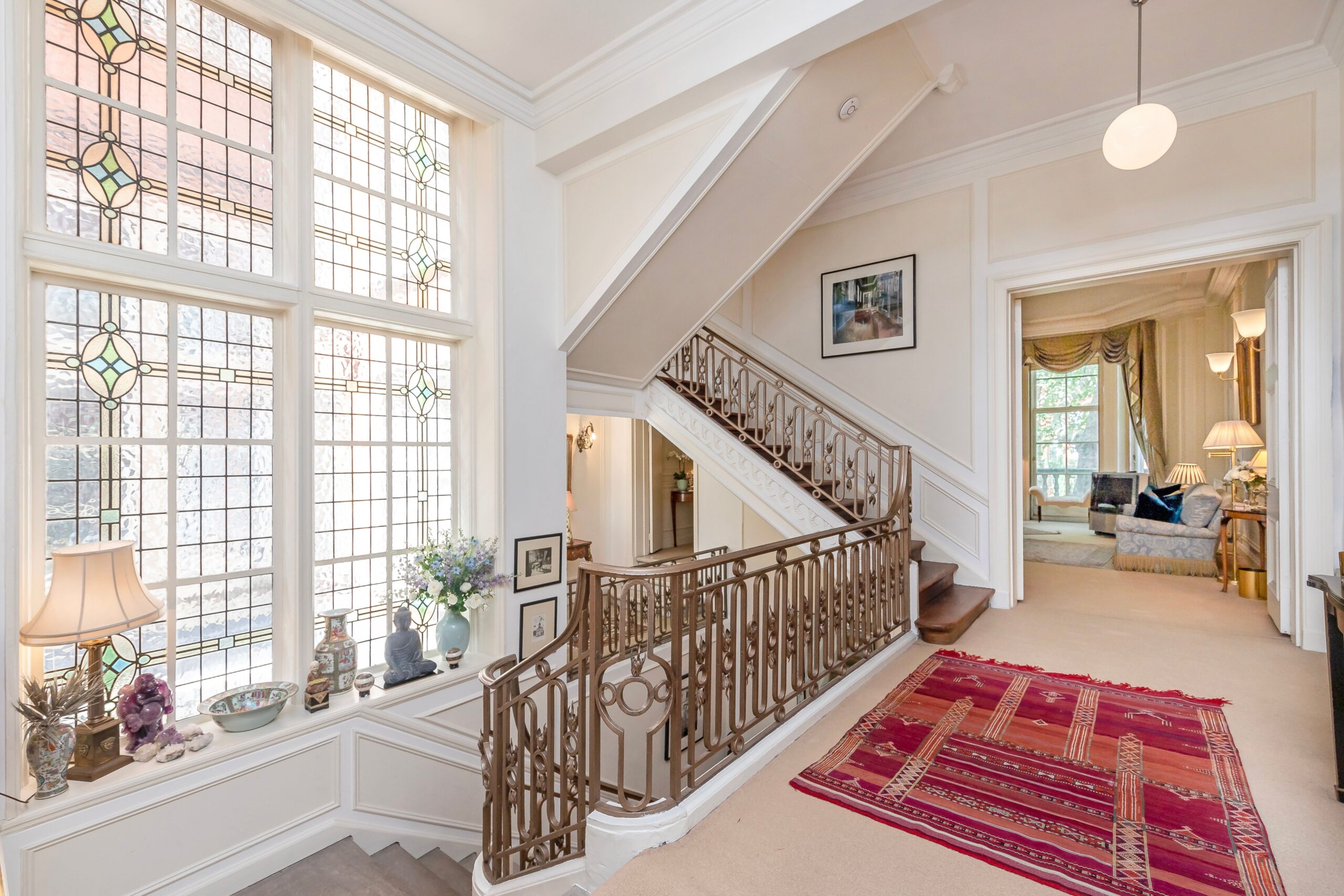Magnificent Blue-plaqued Mayfair townhouse on South Street now for sale
The magnificent Blue-plaqued Mayfair townhouse on South Street of Lord Ashfield, the founder of London Underground, where he helped to plan the capital’s subterranean defence during the 1940 blitz bombing, including transforming Down Street Tube Station into a bunker for Winston Churchill and his War Cabinet, is for sale via sole agent Wetherell: the first time it has been on the market in twenty years.

The Grade II listed six-storey 6,477 sq. ft townhouse overlooking Mount Street Gardens was built by J.J Stevenson in Queen Anne revival style, between 1896 and 1898, and retains many of its original features. It provides an impressive family home with its six sumptuous bedrooms and a lavish space for entertaining with ceiling heights of 3.5 metres in the formal reception rooms. Two rear balconies offer magnificent views over Mount Street Gardens, which pre-date the house by nine years and house a variety of exotic plants including a Canary Island date palm and three dawn redwood from China.
Between 1918 and 1940 the South Street house served as the London home of Lord Ashfield, the celebrated First Chairman of London Transport and founder of London Underground. The plaque commemorating Lord Ashfield (1874-1948) was erected in 1984.
Born in Derbyshire in 1874 Ashfield, or Albert Stanley as he was then, emigrated to Detroit with his family in 1880. Leaving school at just fourteen allowed him to play a part in the infrastructure boom taking place in the US, and he rose to become General Superintendent of the Detroit Street Railways Company at the age of just twenty.
His successful career in America was noticed across the Atlantic and as a result he was appointed as Managing Director of the Underground Electric Railways Company of London in 1907, where he was an instant success, launching the Bakerloo line and standardising all of London transport under one organisation in 1930.
Not suprisingly, Ashfield worked extremely long hours and his house on South Street effectively became an extension of London underground’s head office, with the principal rooms often filled with complicated floorplans for tunnels, stairwells and passageways of London’s vast underground rail network.
